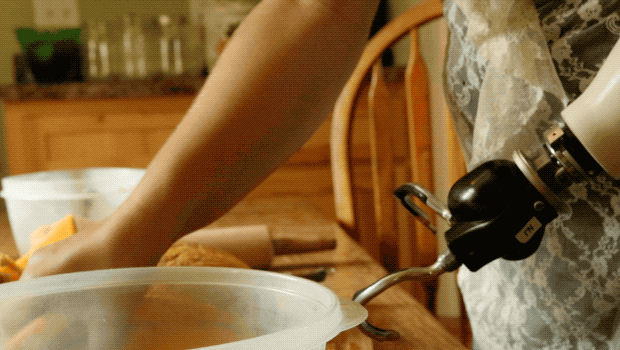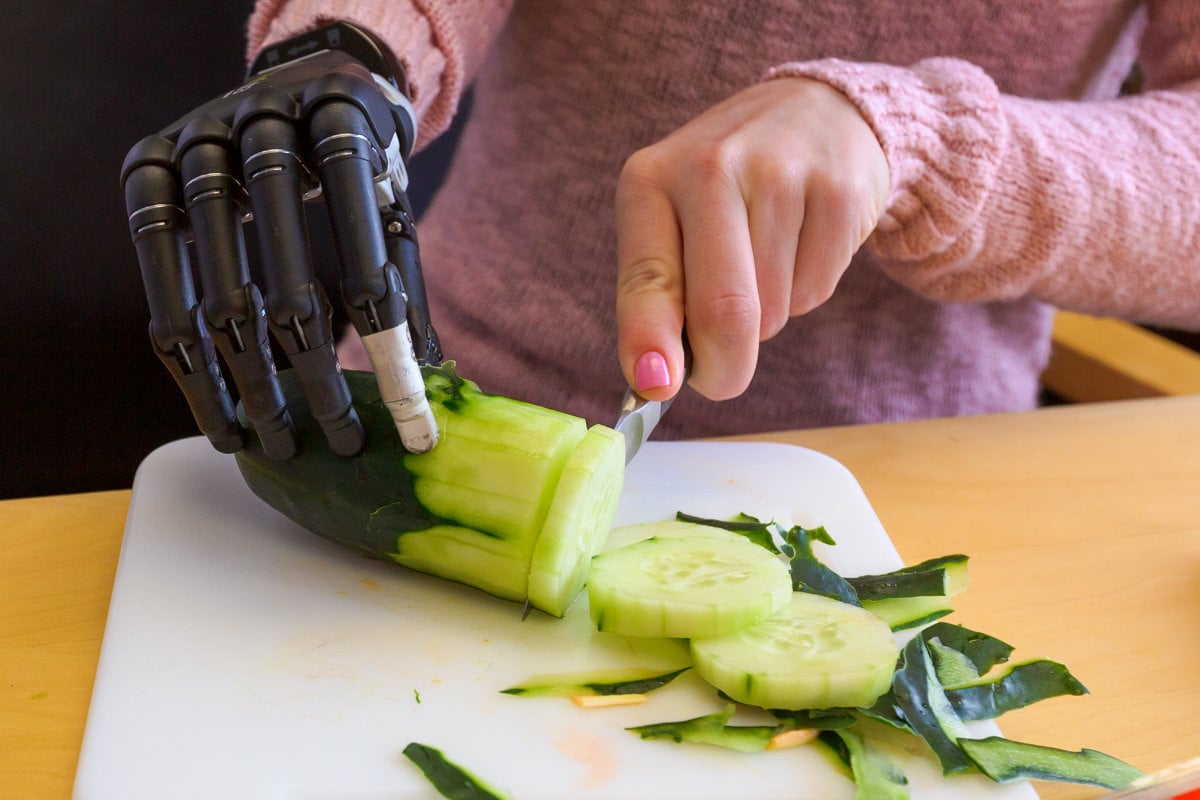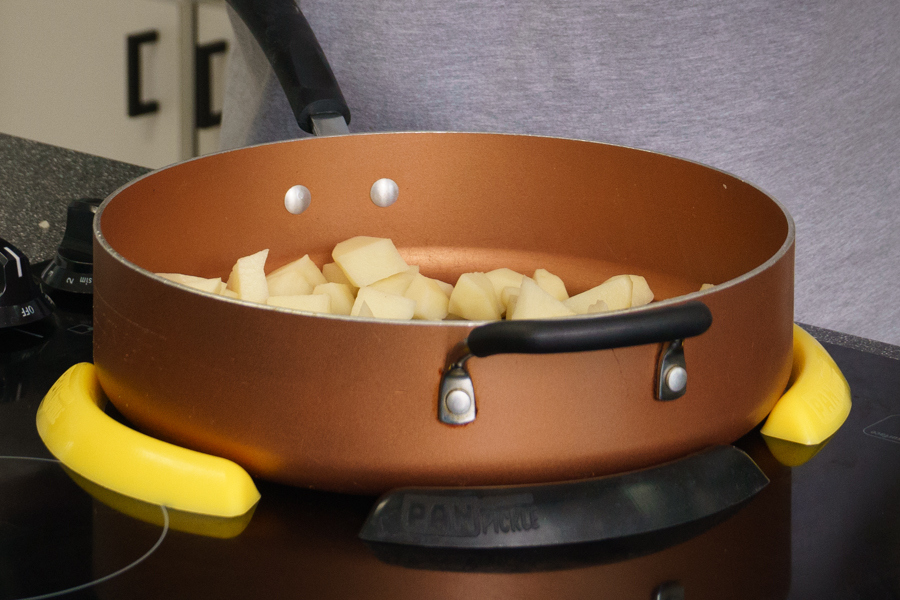Cooking is more than just heating food in a microwave or oven. There is a lot of prep work involved, which includes forethought about what tools will be required to complete the steps of prepping and cooking. When you have an upper limb difference, one of the best tools that you can have in the kitchen is your prosthesis. In this article, we’ll discuss some tips and tools that can make cooking with an upper limb prosthesis easier, and link to other blog articles that discuss all things food.
Depending on the type of prosthesis you have, you may find it easy to handle food directly with the terminal device or you may need to hold and manipulate kitchen tools. Some terminal devices, like an ETD, which is water resistant, can be used to easily grasp food and then be cleaned with soap and water. Others, like body-powered or passive finger devices, may be able to handle food and then be washed, but you might find it difficult to get bits of food out of crevices. Keeping a small kitchen brush near the sink will help with that. Some of the non-waterproof electric hands are more difficult to wash and therefore, should not directly touch moist or messy food. In those cases, like when mixing meatloaf or balling up cookie dough, it may be easier if use your prosthesis to hold an ice cream scoop or a large spoon.

We have many helpful blogs that offer tips on how to use your prosthesis or specialized kitchen utensils. Cutting and chopping is a huge part of the process of cooking, and that’s why we have a whole blog devoted to it! Check out “Kitchen Tips for Upper Limb Amputees: Cutting and Chopping.”
An organized kitchen is a useful kitchen. Check out our article “Kitchen Organization and Set Up for People with an Upper Limb Difference” for tips on minimizing clutter while maximizing efficiency. Baking for People with an Upper Limb Difference” has great ideas about how to get food ready to go into the oven and take it out safely. For help with using your prosthesis to eat, we have “Eating When You Have an Upper Limb Difference” for tips about utensils and keeping plates steady.
We know how important that morning cup of coffee or tea is! At first, you may not feel confident enough with your prosthesis to pour liquids, especially hot liquids. With practice and training, you will become an expert but, in the meantime, you may need a little help from a very useful kitchen gadget called the “jug kettle tipper”. It is a wire-frame device that can help you pour hot or cold liquids safely so that you don’t have to ask someone else to do the pouring for you. Just search for that term and you’ll find options.
We recently visited our patient Frank, who showed us how he cooks using something called the Pan Pickle. This is a tool that is helpful for anyone with a flat cooktop. It keeps the pan from moving around too much on the stove while stirring. You can see an image of the Pan Pickle(s) and watch Frank using them below:
Many of our patients mention cooking as one of their goals once they have their prosthesis. Our clinical therapy specialists are in charge of making sure everyone knows how to work toward their goals — that’s why we have a full kitchen in each of our centers! Our therapists often pick a meal or a snack to make with a patient, like a tuna fish sandwich or a smoothie. This way they can walk our patients through all the steps and how to use their new tool, aka their prosthesis, most efficiently in the kitchen.
If you or someone you know would like to learn more about how a prosthesis can help with cooking, please contact us to schedule a complimentary consultation, either in person or via video chat. If you have a prosthesis and have tips to share, please do so in the comment section below. We hope you have found this article helpful!










%20President%20and%20Senior%20Clinical%20Director.jpg?width=600&height=600&name=John%20M.%20Miguelez%2c%20CP%2c%20FAAOP(D)%20President%20and%20Senior%20Clinical%20Director.jpg)










Comments (2)